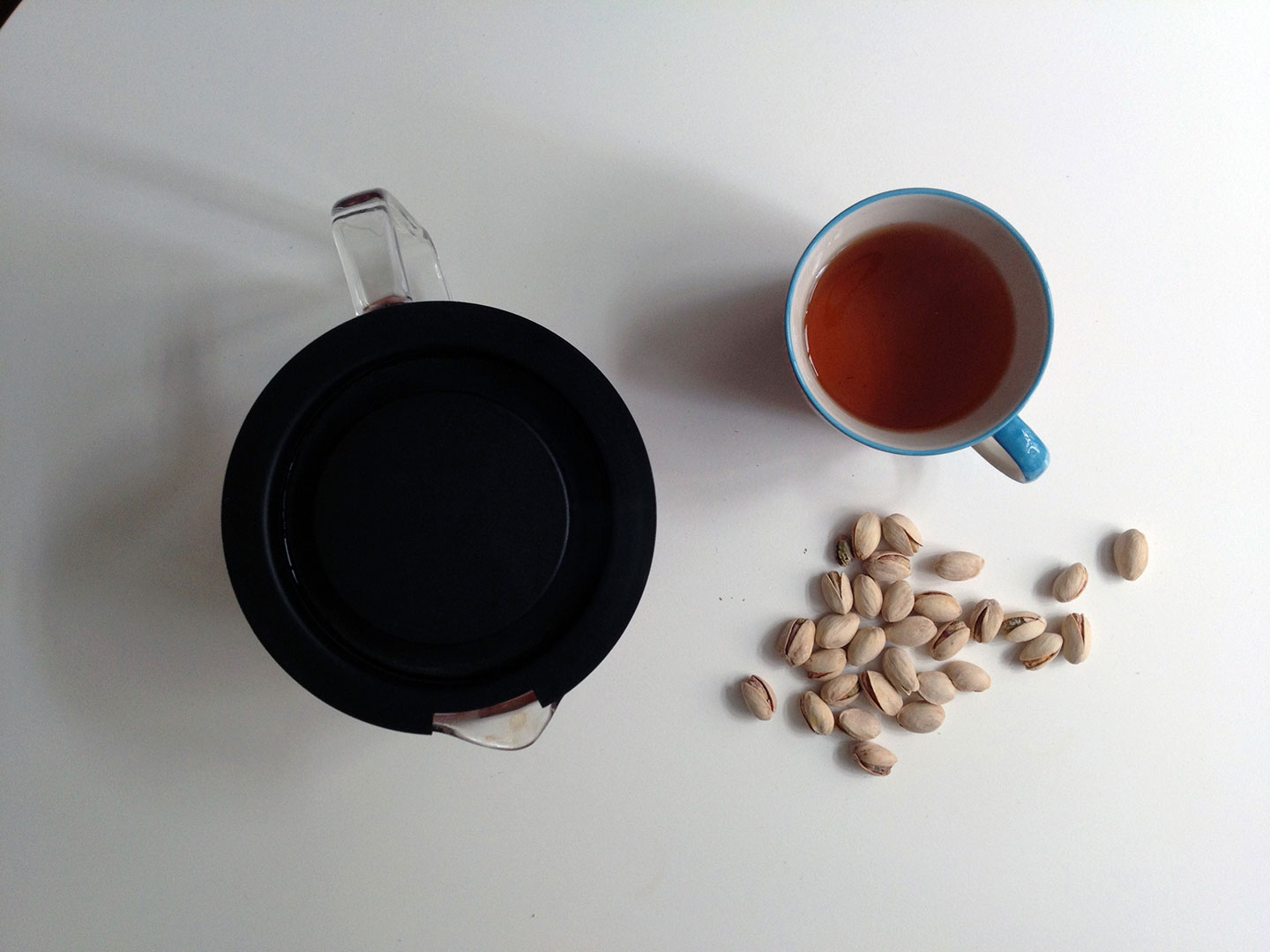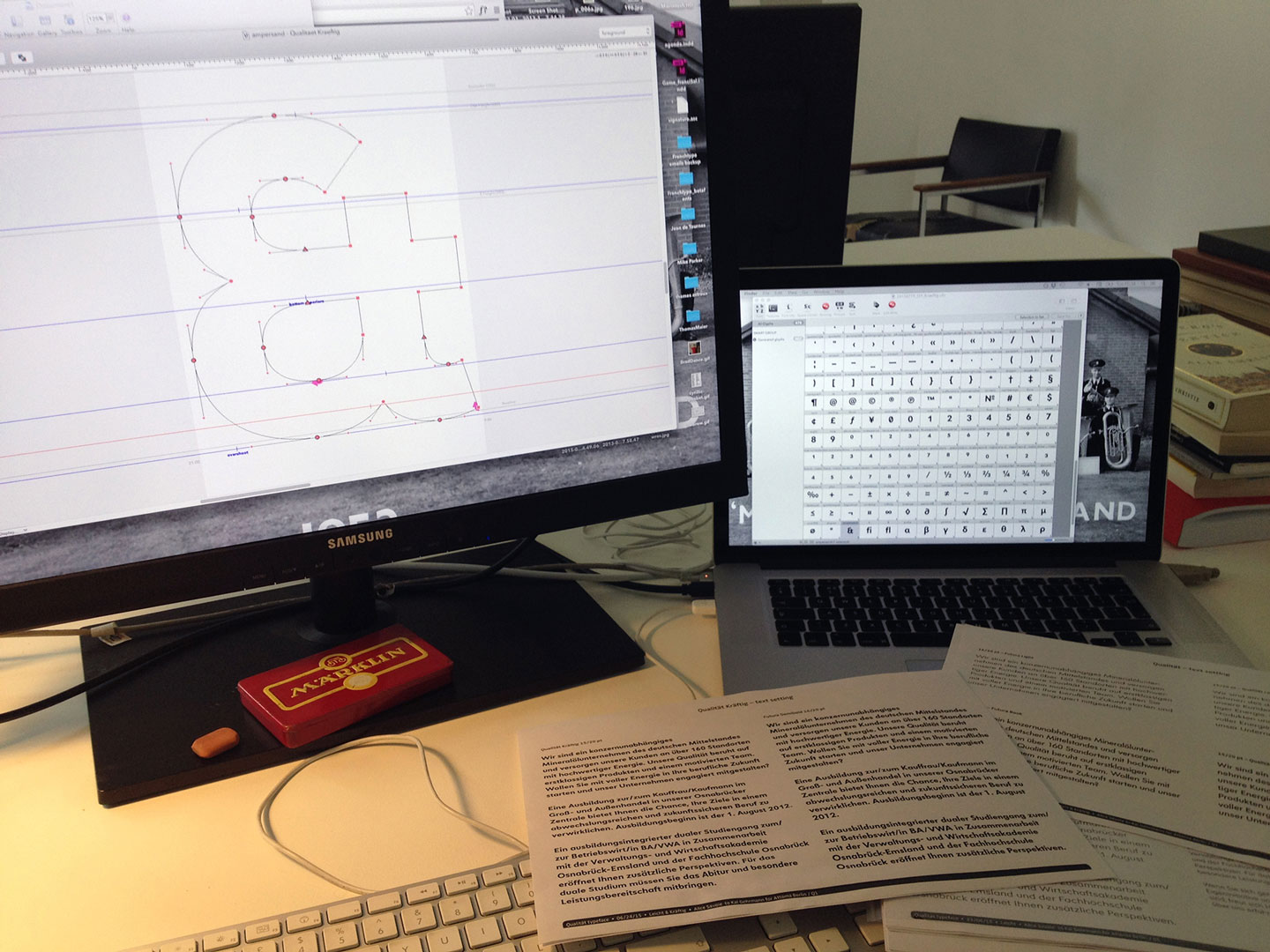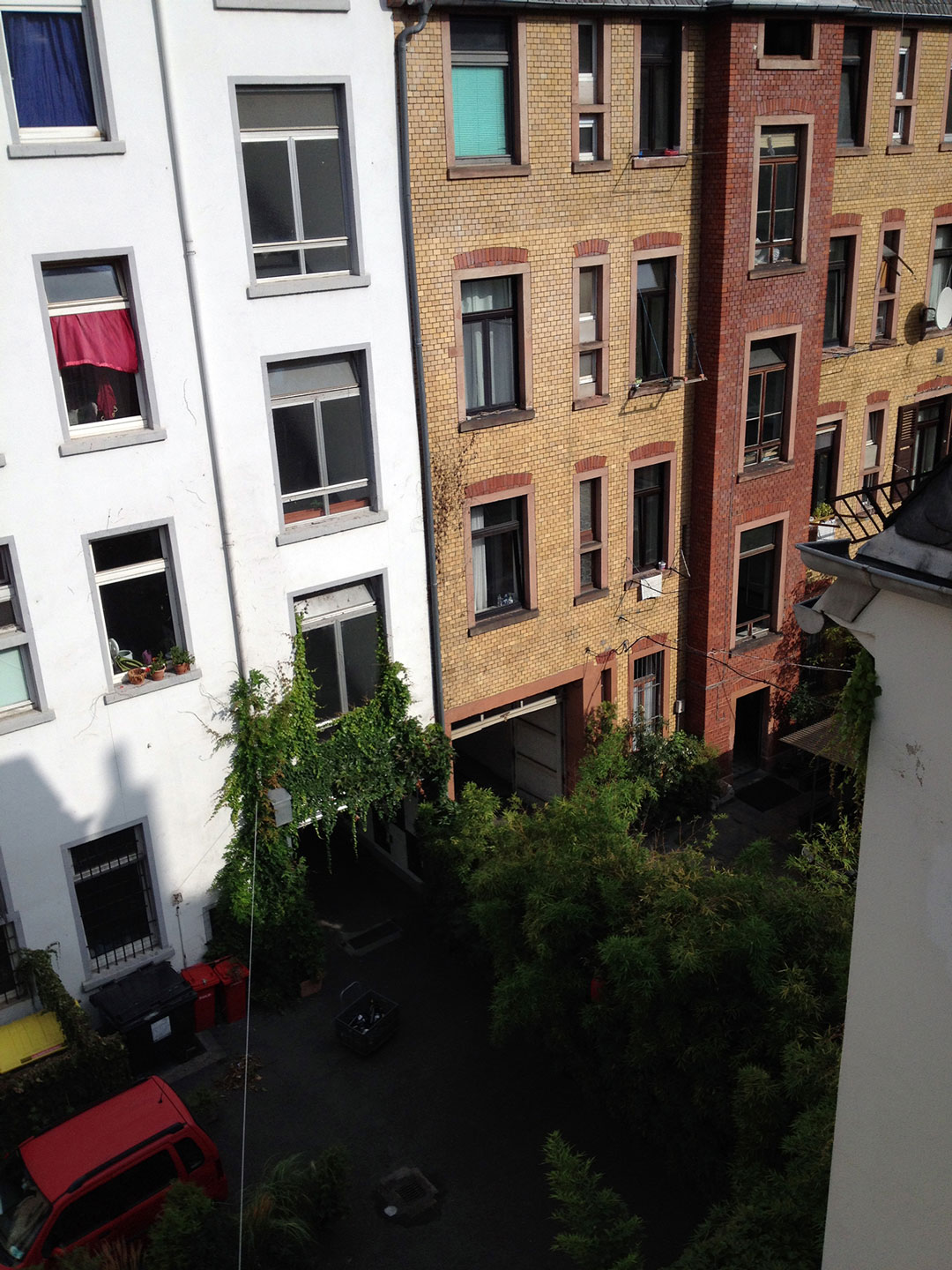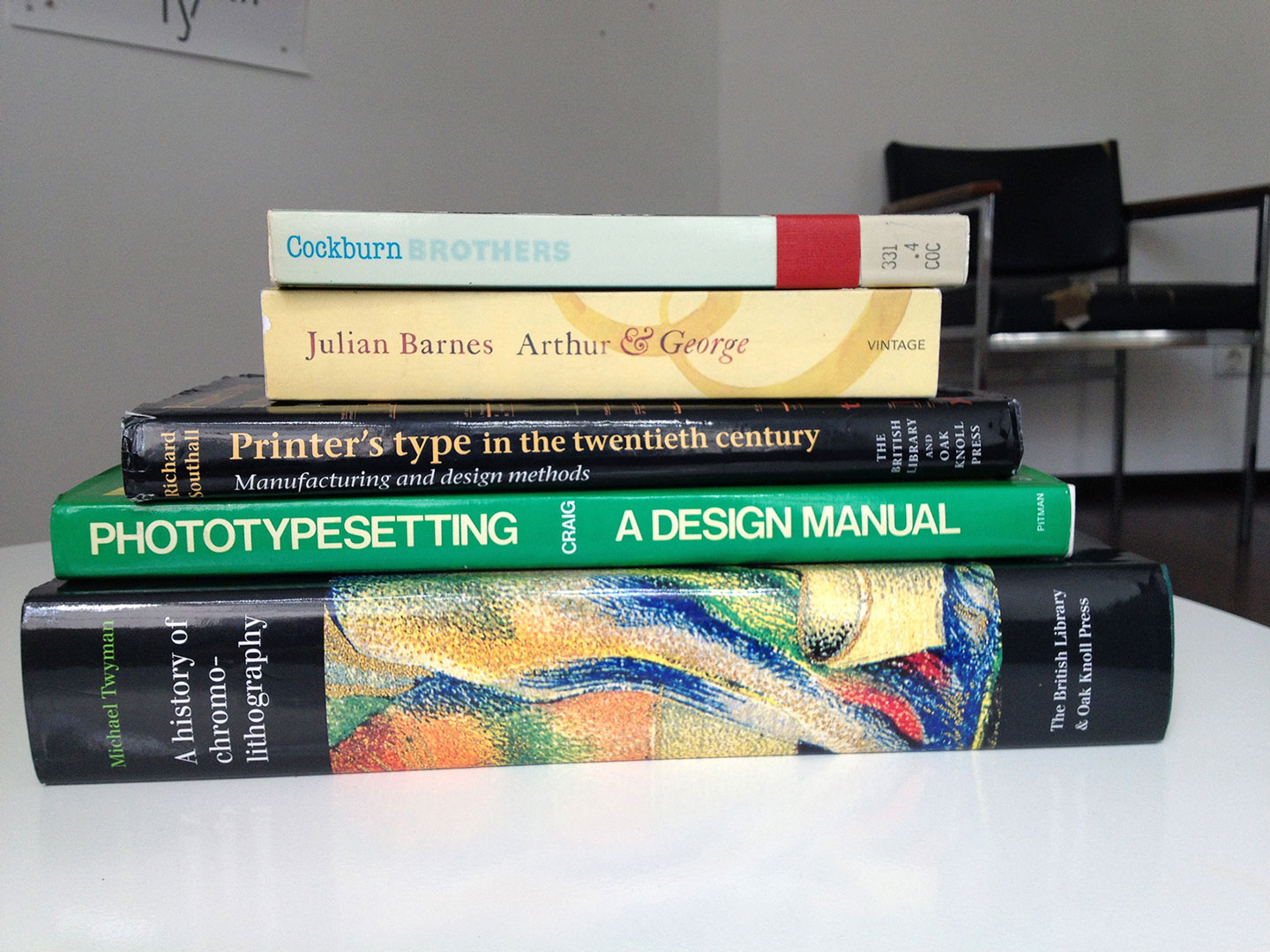I always find it interesting to talk to people. And more than that – to talk to other ladies that are doing similar things like I do, experience the same dilemmas, and most likely share with me some feelings. This series of interviews aims to give us an insight about the lives and work of the Alphabettes.
The structure is simple: Three sections with different length of answers to allow skimming or reading (aren’t we all so busy?). “The warmup” with short questions, “The visual” with photos taken by our interviewee as replies, and “The longer bits” of questions that require some more words to answer to, and probably more thought.
Each interviewee will nominate the next lady to be interviewed, out of our lovely Alphabettes. The last paragraph will also give us a preview of the next interview, with a question passed along for next post.
So grab a coffee or a freshly squeezed orange juice and start reading. Hope you’ll enjoy Alice’s answers just as I did!
The warmup
Write three sentences about you
Hi, I’m Alice Savoie, an independent French type designer and researcher.
I’m a bit of a phototypesetting nerd, and even wrote an entire PhD about it.
I mostly design Latin typefaces, but I also love designing Greek.
What is your soundtrack while working?
I usually listen to the radio while I design, or to some literary podcasts. If I am writing, I tend to need complete silence to be able to focus.
Name three locations: a current location, a location you love, and a fantasy location
Current location: Frankfurt, Germany
A location I love: Lyon, France
A fantasy location: Vientiane, Laos
Your favourite glyph to design and the most challenging one?
I love designing ampersands.
Greek lowercase letters zeta (ζ) and xi (ξ) are always a bit of a challenge to me – getting the right proportions and modulation can be tricky.
What is something you did that you are proud of?
Completing my PhD after three and a half years of intense work.
The visual
A photo of your favourite beverage, and something to eat with it
A photo of your type drawing process
A photo of your desk, working space
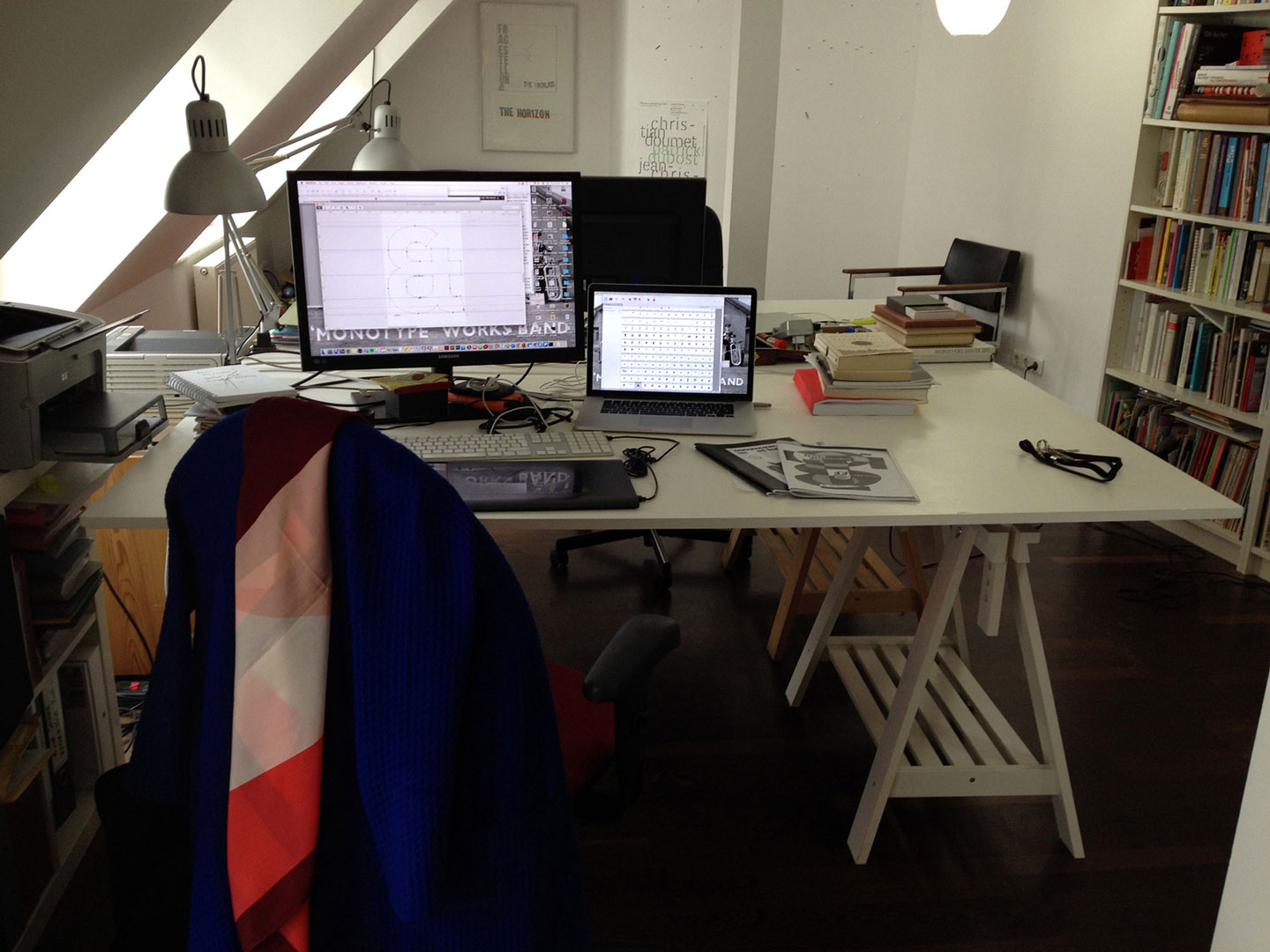
What do you see from your window?
A pile of books, both professional and others
The longer bits
You are often speaking at conferences, which can be seen as another form of teaching. How do you see teaching (which you also do) compared to public speaking?
I usually arrive at conferences knowing precisely what I want to say and what I want to show to the audience, having prepared and timed my presentation accordingly. There are usually a few essential points that one wants to get across when giving a talk, and the aim is to expose these points as clearly as possible in the timeframe provided.
In comparison, my experience of teaching is very different from public speaking, mostly because I tend to teach typeface design to small groups of postgraduate students, which allows for a greater degree of spontaneity and interaction. When I teach, I hardly ever prepare anything in advance; I like to think that I am there to respond to my students questions and to challenge them, which might involve different things depending on the student and the nature of his project. At the beginning of the term I also like to get to know my students before devising an assignment. I think I am very much a non-dogmatic person, therefore I try to be open and flexible in my teaching so that my students can find their own approach to type design, which to me is essential at postgraduate level.
What are your thoughts about choosing where to live your life? How did you feel to move countries?
This seems to be a recurring question in my life and I think I am still looking for the answer on that one! I grew up and studied in France, then moved to the UK for my MA in 2006 and ended up staying there for almost eight years until completing my PhD. I moved back to Paris in 2014, but shortly after decided to move again, this time to Germany, for personal reasons. The greatest thing about living in Europe is that I can navigate between different countries and languages almost on a weekly basis: I currently have my studio in Frankfurt, but I teach in France every other week, and my clients are scattered across Europe and the US. Working as an independent type designer gives me that flexibility, and I am very grateful for it.
On the other hand I have also learnt in recent years how important it is for me to live just a train ride away from my family and my friends, and to feel rooted somewhere – which is probably why I am always drawn back to France and nearby countries. Constantly navigating from one place to the other can be exhausting and it can make it hard to settle down, but I believe it is mostly a matter of finding a rhythm that suits oneself, and of creating a comfortable and cosy ‘basecamp’ to come back to on a regular basis.
You have studied calligraphy and worked a lot on hand drawings. How do you believe it assisted you? Do you still draw by hand in the process of designing type?
First of all, I should say that as a lefty I have never been a brilliant calligrapher – I am still trying to find the most convincing technique to handle the pen, if anyone has some tricks to share! Despite of that, handwriting (perhaps more than calligraphy) has been a very important way into typeface design for me, definitely. This is very obvious in my first published typeface Capucine for instance. This is also due to the way I was taught at the École Estienne in Paris by Franck Jalleau and Michel Derre, whose methodology very strongly associated calligraphy and typeface design.
Nowadays the computer and font editors such as Robofont and Fontlab are central to my design process. However I still need to draw by hand while designing, but mostly as a way to find some design solutions to specific problems, or to look for the right tension in a curve. I also like to be able to draw with black and white zones, rather than move around nodes on outlines – and so far the most efficient way of doing this is still by hand.
Share a moment of a breakthrough / when you discovered something important / surprising during working on your PhD.
I suppose my PhD experience was punctuated with small discoveries that seemed very important to me at the time, but which essentially helped me build a clearer picture of the chaotic (and fascinating) period that was the phototypesetting era. One of those moments came from studying the Mergenthaler Linotype Company Records at the Smithsonian Institution in Washington. Until then I was mostly familiar with the archives of the British Monotype in Salfords, and Monotype’s approach to phototypesetting was rather clear : they aimed to offer to their customers a phototypesetting machine that was as close as possible to their hot-metal casters in order to keep their customer base – an approach that was pretty conservative but supposedly made a lot of sense at the time. However, as I studied the Mergenthaler records from the early 1950s, it soon appeared that the whole Linotype group developed a radically different strategy: unlike Monotype, Mergenthaler recognised early on that phototypesetting offered the potential to diversify its activities and enter new markets. Consequently Mergenthaler conceived its first phototypesetter, the Linofilm, as a complementary technology to its linecaster rather than a competing one. This approach led to the creation of an ambitious typographic programme in the 1960s and 1970s, with the development of many new display typefaces, which were scarce in the Mergenthaler library until then. Going through this early correspondence really helped me to get a real insight into the company’s strategy at the time, and to put everything into perspective. This is also the reason why archive research can be so rewarding!
How was working full time on designing type at Monotype different from your life now – when you are working in many areas at the same time?
Part of the answer is already contained in your question – at Monotype, my job was clearly defined: I was designing type full-time, and I didn’t even have to worry about finding clients or dealing with admin since I had colleagues who were responsible for that. In that sense, it was a very good position to be in when it came to being able to spend entire days or weeks on drawing typefaces. However, after a few years I really felt the need to understand better how successive type technologies shaped our industry, and how a type library like Monotype’s had been built over the years. This is how I quit my full-time position to start a PhD on the transition from metal to phototypesetting, to understand the impact of this major technological shift on type design and processes. I started working as an independent type designer and font developer at the same period, and have always considered my research and type design activities to be closely connected. Now I feel very lucky to be able to design, teach and research without having to choose one activity over the other. And I really enjoy the direct contact to clients as well (I wish I could say the same about admin duties!). Of course all these activities mean that some projects might take longer to be completed, and it all requires some serious organisational skills in order to prioritise tasks accordingly. But so far I have found that my design, teaching and research activities feed each other in a very fruitful way, I enjoy the diversity, and I would not want to sacrifice any of them for the benefit of the other.
You can see Alice’s work here.
Next interviewee …
Alice is nominating the next lady to be interviewed:
This is a VERY difficult choice, as I’d love to read about all Alphabettes’ experiences … And hopefully this will be the case as this series of interviews goes on! I would choose Sol Matas from Huerta Tipografica. It would be interesting to read a south-American perspective on the type industry shortly before Atypi Sao Paulo, and also I’d love to know what it’s like to lead a collaborative type foundry, which is 50% male 50% female, and split across two continents!
On a personal note: For me, choosing the first lady to be interviewed was so challenging. I already knew some of the Alphabettes, so this was one option. On the other hand, I wanted to know new interesting and inspiring ladies. I decided to start “close to home”, with Alice Savoie. Alice was finishing her PhD at the University of Reading at the time I was studying the MA in typeface design. I loved thinking of questions that could somehow give me an insight about things I often think about. And they did. The decision whether to work in one job or work on multiple stuff was (and in a sense still is) a big one for me. Same with deciding where to live. Reading another woman’s view on those was inspiring. And hey, I’m also a lefty! Thank you Alice for your sincere answers.
